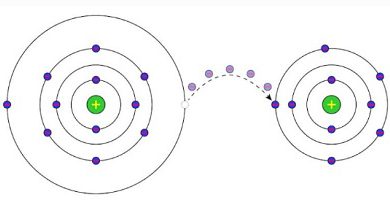What are sea currents?
We explain what marine currents are and the types that exist. In addition, the causes of its formation and the main marine currents.
-
What are sea currents?
Marine currents or ocean currents are called a type of movement characteristic of the waters that constitute the most extensive oceans and seas , and that are due to a multitude of factors, both to terrestrial rotation , winds and the location of the continents.
Sea currents often involve both cold and warm bodies of water , which connect various climatic bands of the globe, traveling both superficially and underwater:
- Warm currents are surface waters that originate in the oceans of the intertropical zone and that migrate from the eastern coasts of the continents to the middle and high latitudes, against the terrestrial rotation and only in the northern hemisphere.
- Cold currents are waters of low temperature and great depth, which start from the intertropical or subtropical zone, and compensate for the effect of the warm ones when they reach the western coasts of the continents. They are particular to the Arctic regions, since in the Antarctic zone there is hardly a circular current around the pole.
The constant displacement of these marine currents throughout the world allows maintaining an energetic and caloric cycle on the planet , which results in a set of more or less fixed climates in certain regions, such as dry climates on the western coasts of the area intertropical or subtropical, and warmer and wetter climate on the western coasts of the continents in the middle and high latitudes. The same applies to salinity levels in ocean waters. This joint cycle is known as the Global Thermohaline Circulation.
-
Types of sea currents

We can talk about the following types of currents, according to their characteristics:
- Ocean currents . They present a constant movement generated by the terrestrial rotation, in general in the east-west direction in the intertropical zone, or in the opposite direction in the middle or high latitudes.
- Tidal currents . Periodic currents of daily cycle, which produces the attraction of the Moon and the Sun on the surface of the waters, that is, in warm waters. They move huge amounts of water from the northern hemisphere to the south and vice versa.
- Wave currents . Produced by winds, especially by storms or hurricanes, they take place on the surface of the waters and have a limited impact.
- Streams of coastal drift . They are due to the encounter of the currents with the layout of the relief of the coasts, which forces them to modify their orientation or their direction.
- Density currents . Those that originate in the contact zone between two bodies of water with different density , such as those more and less saline, or more and less warm. They usually occur in straits between different seas and oceans, along the equatorial axis, or along the Arctic circle.
-
Causes of sea currents

The three most important physical causes of ocean currents are:
- Terrestrial movements . Both the translation and the rotation of the planet cause constant movements of the bodies of water, although in many cases they move in the opposite direction to the Earth’s rotation.
- The planetary winds . It is not true that the winds directly cause the tides, but they do contribute to this, by displacing not only surface waters (as in the waves), but also by mobilizing the atmosphere to circulate the heat energy of the environment, which has An impact on water.
- The rise of cold waters . The deep waters of the ocean are cold, since they are denser and have less energy. These waters arise towards the surface in specific areas of the intertropical zone, pushing the warm ones in their path.
-
Main marine currents of the world
The main known sea currents are, according to the Ocean:
Arctic Ocean :
- West Greenland Current.
- East Greenland Current.
- Norway stream.
Atlantic Ocean .
- Current of the Antilles.
- North Atlantic Current.
- South Atlantic Current.
- Benguela Current.
- Brazil current.
- Cape Horn Current.
- Current of the Canary Islands.
- Caribbean Stream
- Northern Equatorial Current.
- Southern Equatorial Current.
- Gulf Stream.
- Guinea stream.
- Labrador current.
- Madagascar stream.
- Current of the Falklands.
- Current of northern Brazil.
- Portugal stream.
- Spitzbergen stream.
Pacific Ocean .
- Alaska stream.
- Aleutian stream.
- East Australia stream.
- California Current.
- Cromwell current.
- Humboldt Current
- Kamchatka stream.
- Stream of Kuroshio or Japan.
- Mindanao stream.
- Stream of the child.
- Oyashio stream.
- North Pacific Current.
Indian Ocean .
- Needle Current.
- Western Australia stream.
- Southern Equatorial Current.
- East stream of Madagascar.
- Leeuwin stream.
- Madagascar stream.
- Monsoon Stream
- Mozambique Current.
- Somalia stream.
Antarctic Ocean .
- Antarctic Current
- Antarctic Circumpolar Current.
- Wedell turn.





